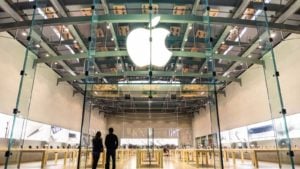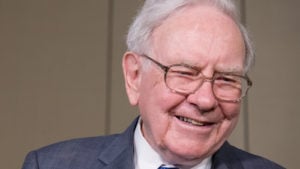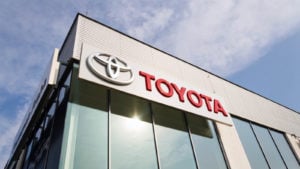Investing is broadly characterized by polarized spectrums. One such spectrum is that which contains active, high-volume trading on one end and passive, buy-and-hold investing on the other. Buy-and-hold investing is the strategy that seeks to buy low and sell high.
Diversification and a lot of time spent researching the market are hallmarks of a successful long-term, buy-and-hold investment strategy. Historical data tends to favor this approach, proving its success vis-a-vis shorter-term, active strategies.
The strategy’s most famous proponent is Warren Buffett, who has famously quipped about its utility. One of his most-famous sound bites is “Our Favorite Holding Period Is Forever.” He notes that investors who don’t feel comfortable holding a stock for 10 years shouldn’t own it at all.
That’s essentially the same as holding it until 2030 for our purposes.
The passive strategy isn’t perfect although it is empirically successful. There are downsides. One of the more significant is that buy-and-hold investors have to sink large amounts of capital into such portfolios, effectively tying it up. It is a set-it-and-forget-it strategy for the patient investor that works.
Sunrun (RUN)

Sunrun is the number one residential solar panel company. Given its dominant position in that market there may be no better time than right now to establish a long-term position. That’s because RUN stock is currently being punished. New solar installation rules being proposed in California came as a surprise. The solar-friendly state is considering imposing connection fees and reducing prices paid for the energy users send back to the grid.
That sent Sunrun off a cliff on Dec. 13. Consider it a buying opportunity.
It is a temporary hitch in a longer-term growth narrative. It was only a month before Market Research Future released a report on residential solar prospects showing the market was valued at $7.17 billion in 2021. Fortunately, compound annual growth rates of 24.52% are predicted between 2022 and 2030. That suggests that the market should grow to $27.45 billion by 2030.
Solar stocks will remain lower until at least Jan. 27 when California plans to vote on the newly proposed rules. And the state comprises 40% of Sunrun’s base. Invest around that news but consider the longer term horizon either way.
Duke Realty (DRE)

Duke Realty is effectively a logistics firm. And if 2021 taught us anything, it is the fragility of our supply chains.
Nick Vyas is a supply chain expert and associate professor of operations at USC’s Marshall School of Business. He’s become a sought out resource for understanding what has gone wrong in 2021. He boils it down to two main factors; “First, China opened its economy and became the world’s dominant manufacturing hub. At the peak of its manufacturing prowess, China fulfilled more than 40% of global demand for a wide variety of consumables. Second, a cheaper, better, faster mindset took hold, trumping any widespread appetite — and motivation — to invest the time and money for a more stable, sustainable supply chain.”
In my mind that suggests that logistics companies which have fared well in the pandemic are a smart bet moving forward. They’ll adapt quickest and prosper for the long-term.
DRE stock is a REIT which has a footprint of 160 million square feet of warehouse and distribution facilities across 19 U.S. markets. It has a near 50-year track record and 800 customers.
Apple (AAPL)

Apple has been one of the most important companies in the world over the past few decades. Whether you associate it most closely with the iMac, the iPod, the iPhone or the iPad, it’s impossible to say it’s anything but a successful firm.
In fact, it’s the most valuable firm in the world based on market capitalization right now. But at the same time, investors can’t help but wonder whether Apple can continue to come up with breakthrough product after breakthrough product.
One of the more commonly suggested products is the Apple Car. And depending on where you look, and who you ask, it may or may not come to fruition.
One the one hand, there are arguments that seem to suggest Apple will never build a car. This article is very dismissive of the possibility at all. While the author recognizes the massive revenue potential, he ultimately dismisses the idea on margin grounds. Automobile manufacturing is a notoriously low margin endeavor, Apple is not.
Other articles make less fundamentally sound assertions that the iCar will happen. Why? Nothing other than the idea that Apple needs to make the next big thing. In a decade it’s hard to imagine that AAPL stock won’t have outpaced the broader market simply based on its long, storied track record.
Berkshire Hathaway (BRK.B)

Berkshire Hathaway is the ultimate name in buy-and-hold investing to be sure. So, on the one hand, it makes sense to consider BRK.B stock as an obvious choice to buy and hold until 2030.
But, at the same time, there’s a bit of an elephant in the room: CEO Warren Buffett is 91 years old and he is unlikely to be running the firm in 2030. Fortunately, he has a successor in place. The firm’s relatively youthful 58-year-old vice chair of non-insurance business operations named Greg Abel.
All indications are that Abel will continue to run things as Buffett and Charlie Munger have. In fact, Munger stated that “Greg will keep the culture.” Abel has been with Berkshire Hathaway since 2000, so it’s fair to say that he’s well versed in how it conducts business and what its values are.
My guess is that by 2030 BRK.B stock will be precisely what it is today: A reflection of America’s strongest firms, well balanced towards those which perform best over the long-term. It has gone from $80 to $280 over the past decade and I’d expect as much again by 2030.
Toyota (TM)

Toyota is steady and reliable both as a vehicle and a stock. That’s exactly in line with the premise of buy-and-hold investing to be sure. Don’t expect it to do anything earth-shattering. Rather, expect it to make well-reasoned decisions with the future in mind.
In this case all indications are that Toyota will be a more electric vehicle-dominated firm in 2030. That speaks to a few ideas. First, it’s a strong indication that EVs aren’t going anywhere. Toyota had acquired a laggard image when it comes to legacy carmakers and EV adoption. Other manufacturers including Ford (NYSE:F) and General Motors (NYSE:GM) were quicker to jump on the bandwagon.
So, when Toyota recently announced that it would be allocating $70.4 billion to EVs by 2030 with a goal of selling 3.5 million EVs in 2030, markets took notice. Toyota also intends to have 30 different EVs in the market by 2030. Expect a slow, steady, methodical approach which mirrors the empirically-driven results of buy-and-hold investment.
Toyota is also leaning into solid-state battery technology. It is heavily invested in the nascent technology and holds the greatest portfolio of solid state battery patents. Expect TM stock to remain highly relevant for decades.
Full story on InvestorPlace.com




Leave a Comment